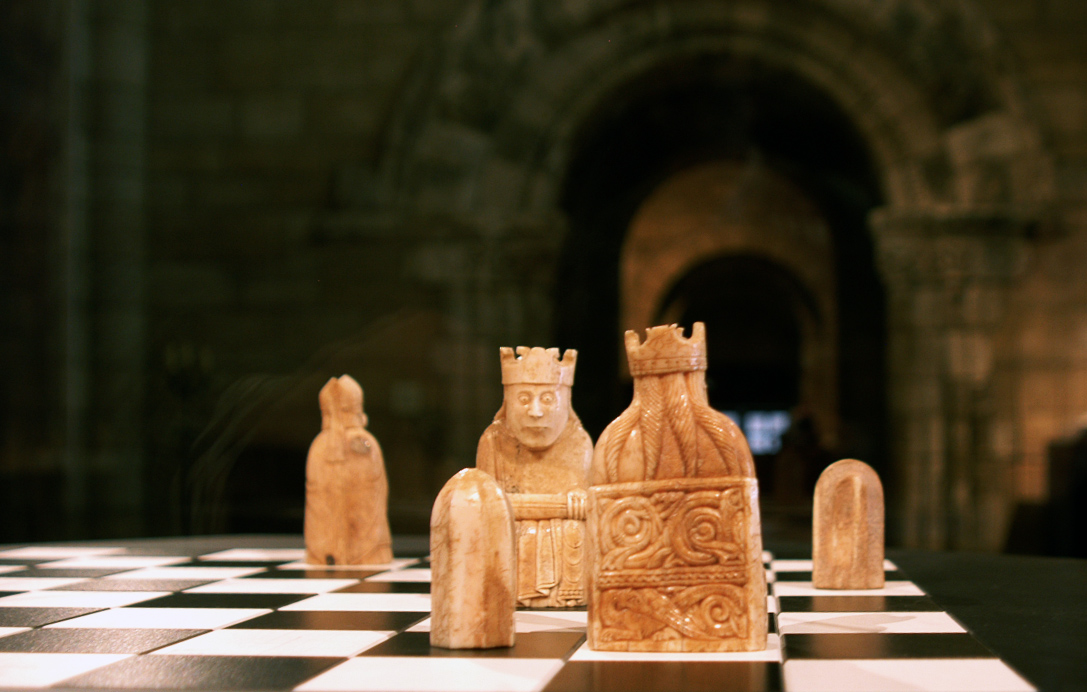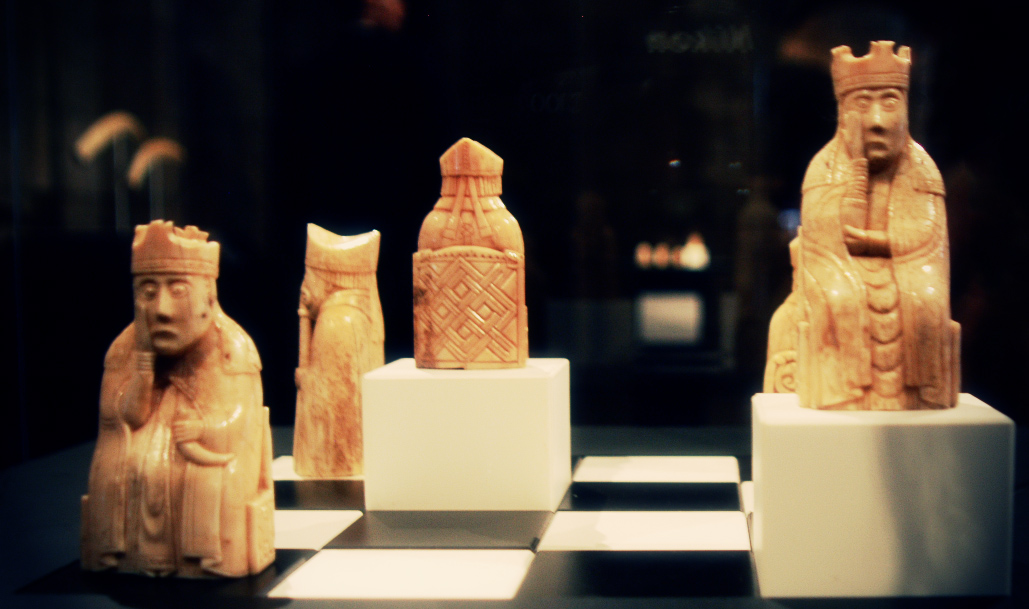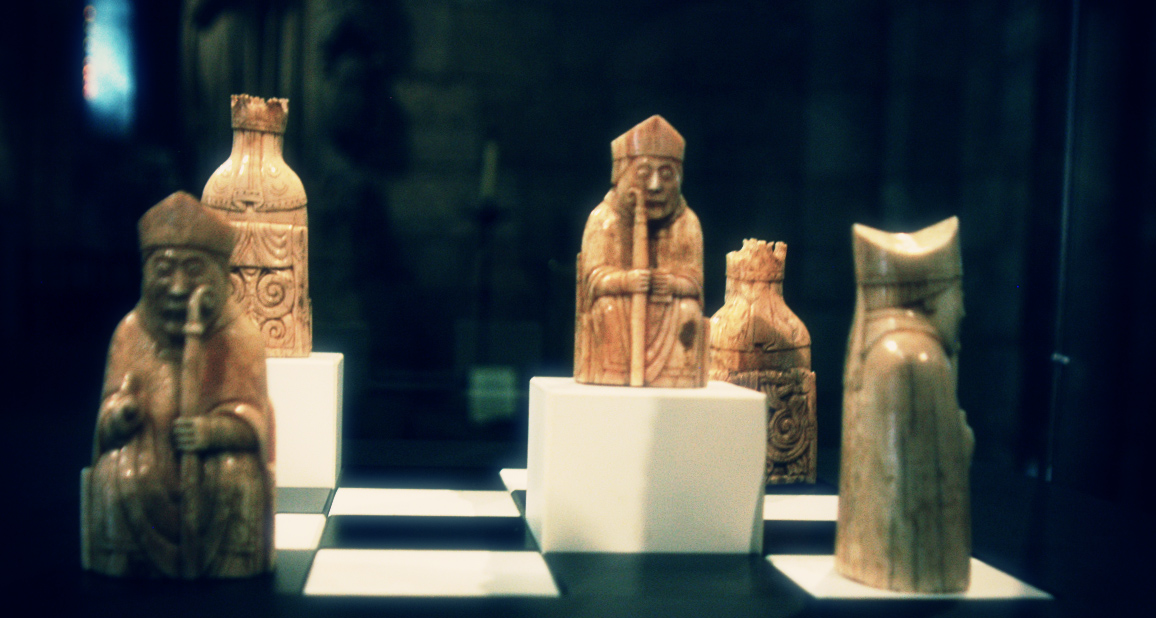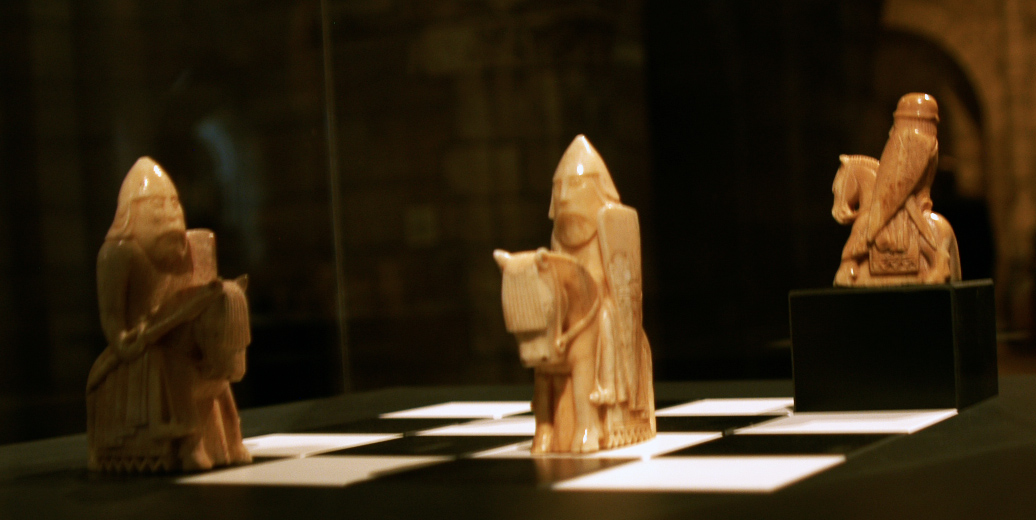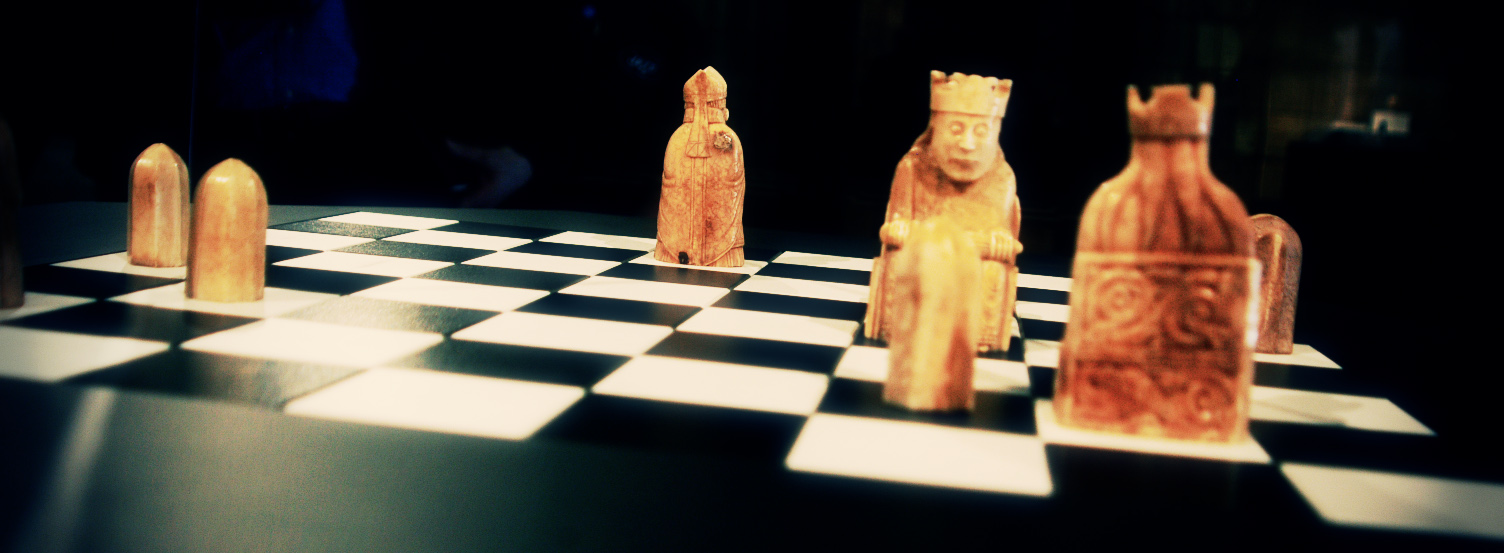Chess The royal game of life
The conflict between the spiritual powers of light and darkness; devas and asuras; angels and demons struggling for domination of the world; existence as a field of action of opposing powers and forces; manifestation and reabsorption. The black and white, or red and white, chequer-board symbolizes the alternating pull of all fundamental dualities and complements in manifestation, the negative and positive; night and day; sun and moon; male and female; obscurity and clarity; the light and dark of the moon; time and space etc., also the criss-cross pattern of life alternating between good and bad, fortune and misfortune.
The sixty-four squares are the mandala of Siva in his transforming aspect and are based on the fourfold symbolism of the 8 X 8, the fundamental form of a temple or city, denoting the cosmos in all its possibilities together with the forces at work in the universe and in man; it thus implies cosmic perfection. The Indian circular chessboard typifies Infinity and the Round of Birth and Death; each game is an epoch, and putting away the pieces symbolizes a period of non-manifestation. The movement of the pieces is the realization of all possibilities in this world and in individual man in manifestation. The choice of movement is free but is responsible for setting in motion an inescapable series of effects; both free will and destiny are involved; the spirit is Truth and in it man is free; outside it he is the slave of destiny.
The King is the sun; the heart; the forces of law and order; his moves are limited by manifestation.
The Queen, or Vizier, is the spirit, the Mover at Will, the moon.
The Bishop, or Elephant, represents rulers of the spiritual world and his move is based on the triangle; moving on the white squares denotes the intellectual, positive way, and on the red or black squares the devotional way, the via negativa; the diagonal movement signifies the existential and feminine, ruled by Jupiter.
The Rook, Castle, or Chariot, is the temporal power, the rulers of this world; the move is based on the square, which symbolizes matter and the earth, while the axial movement, cutting across colours, denotes the virile and masculine and is ruled by Saturn.
The knight, the initiate, uses both the intellectual and devotional way, but without the power of the spirit; the jump of the Knight’s move represents the jump of intuition, also the left-hand path. It is also suggested that it has military and chivalric associations with initiatory orders of the Templars, etc., and is a I WANDERER’ (q.v.) or’knight errant’; it is ruled by Mars.
Pawns are ordinary man, attempting to cross the board, through the seven grades of initiation, to reach the eighth square, the goal of the initiate. To attain the eighth state is Paradise Regained, realization, enlightenment, becoming a Mover at Will. Pawns are ruled by Venus and Mercury, the pair of lovers.
In Arabic-Spanish chess the checkmate (shah mat) is not necessarily the death of the King, but he is dishonoured or defeated and deposed. The Castle or Rook (Spanish roque) is the dreaded Roc, encountered by Sinbad; but it is also the word for a chariot, hence the straight move. The Bishop (Spanish el alfil, Arabic al-fil, the elephant) appears as the elephant as in Eastern chessmen; there is no Queen, but a Counsellor who could move one square diagonally, though for the first move he could jump to the third square, either diagonally or straight. (The Fers of Chaucer; Arabic al-firzan.)
The board varied from sixty-four squares to one hundred and Chestnut – Christmas Tree there was also a double game played on a 16 X 12 square board. Grand, or Great, Chess had a hundred and forty-four squares and there were twelve pieces and twelve pawns; a Gryphon stood next to the King, then a Cockatrice, Giraffe, Unicorn, Lion, Rook.
